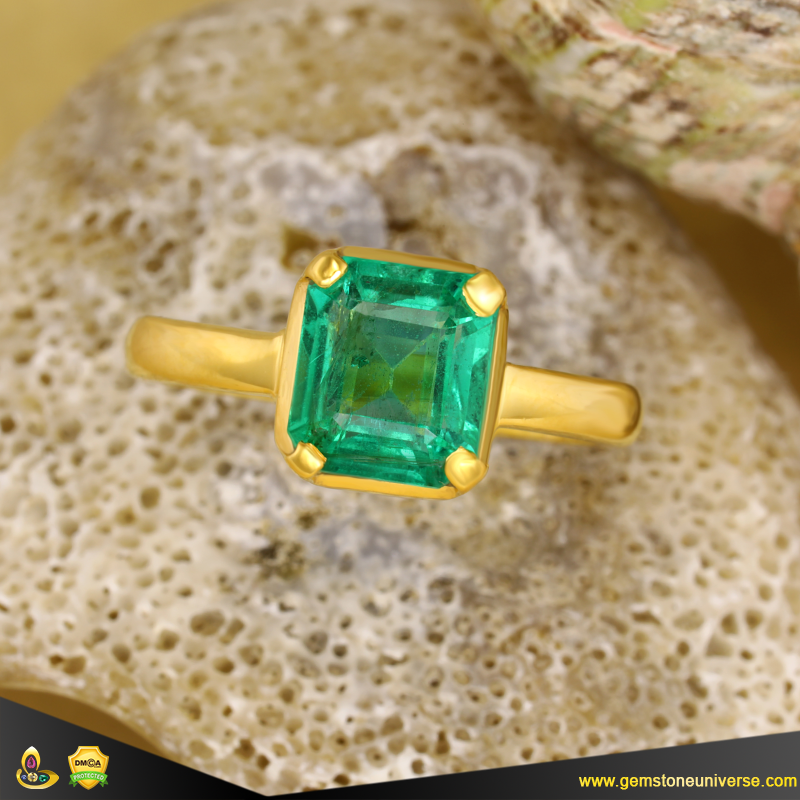In the world of gemstones, the debate between emeralds and diamonds transcends mere aesthetics and enters the realm of rarity and value. While diamonds have long held the crown as the quintessential symbol of luxury and durability, emeralds present a captivating alternative that begs a closer examination. Are emeralds truly more rare than diamonds? Let’s delve into the enchanted world of these vibrant green gemstones and the austere brilliance of diamonds, unraveling the intriguing layers of their rarity and value.
Emeralds, with their lush verdant hues, are often associated with abundance, rejuvenation, and enlightenment. This allure is not only a matter of their striking appearances but also of the geology, scarcity, and the intricate processes involved in their formation. The primary source of quality emeralds traces back to the emerald mines of Colombia, Zambia, and Brazil. Colombian emeralds in particular, revered for their deep green color and transparency, have become the paragons of emerald quality. However, the conditions instrumental in creating these gemstones are exceedingly rare. They require a rare conjunction of elements such as beryllium, chromium, and vanadium, which are not commonly found in significant concentrations in the Earth’s crust.
In stark contrast, diamonds are predominantly formed deep within the Earth under extreme heat and pressure, usually between 140 to 190 kilometers beneath the surface. These carbon structures crystallize and eventually find their way to the Earth’s surface through volcanic eruptions. The geology that yields diamonds is far more widespread than that which produces emeralds, resulting in a much higher global supply. However, this prevalence does not trivialize the beauty and intrigue surrounding diamonds; rather, it introduces a fascinating dynamic when comparing the rarity of the two gemstones.
When discussing rarity, one must consider the quality and overall characteristics of the gemstones. Not all diamonds are equal—a fact that enhances the allure of colored gems, particularly emeralds. The GIA (Gemological Institute of America) rates diamonds based on the ‘Four Cs’: Cut, Color, Clarity, and Carat weight. While these criteria are crucial in defining diamond value, emeralds carry their own unique metrics of evaluation, such as color saturation and inclusions. It’s essential to understand that high-quality emeralds—those that display deep green colors with minimal inclusions—are far less common than exceptional diamonds. The phenomenon of the ‘jardin’, or garden, which are the natural inclusions found within emeralds, adds a layer of artistic intricacy that can elevate their desirability despite appearing imperfect.
Moreover, the market dynamics play a significant role in shaping perceptions of rarity and worth. Diamonds have been marketed through centuries of branding and advertisement as the ultimate symbol of love and commitment, often leading to an inflated demand that drives prices upward. In contrast, emeralds remain somewhat enigmatic. They don’t carry the same cultural weight as their diamond counterparts, often relegated to niche markets or specific tastes. Yet, for the discerning buyer aware of the intricacies involved, emeralds represent a precious alternative laden with history and symbolism.
Historically, the value of these stones has oscillated based on trends, mining expeditions, and economic factors. The ancient Egyptians revered emeralds, linking them to the goddess of love and fertility, while diamonds became coveted status symbols within royal families. Today, as consumers increasingly seek individuality and unique expressions of beauty, a burgeoning interest in colored gemstones marks a shift in the paradigm of luxury. This evolving preference could, in time, lead to a revitalization of emerald values, thereby shedding light on their rarity.
Furthermore, environmental factors pose threats to both gemstones. The quest for diamonds often involves extensive mining operations that can devastate ecosystems, while emerald mining, particularly in Colombia, faces challenges related to sustainability and ethical mining practices. As consumers become more conscientious about their purchases, the origin and ethical production of emeralds may entice buyers who prioritize environmental and social sustainability over traditional diamond purchases.
In an age dominated by mass production and uniformity, the allure of something unique and artisanal cannot be overstated. Emeralds encapsulate that longing. Each stone tells a story not only through its rich color but also its storied history, often steeped in legends and cultural significance. The tales of ancient civilizations, gemstones adorning the crowns of monarchs, or even being featured in famous art pieces only serve to enhance their appeal. The rarity lies not only in the numbers but also in the narratives they carry.
In closing, one could argue that emeralds present an argument for rarity that transcends mere statistics. While diamonds may have the upper hand in overall availability, the sheer magnificence coupled with the compelling story of emeralds holds significant weight. As the gemstone market evolves, the perception of value and rarity is reshaped as consumers embrace diversity in their choices. So, are emeralds more rare than diamonds? The answer may be subjective, influenced by personal taste, values, and the stories we choose to celebrate in the enchanting realm of gemstones.
